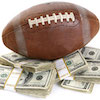Degens know all about James Dolan’s $2.3 Billion dollar addition to the Vegas skyline. They already know that The Sphere is the world’s largest spherical building, and they’ve already seen spectacular images (if not in person, then definitely in their feeds) of the building’s exterior LED screen, covering 580,000 square feet. Like this: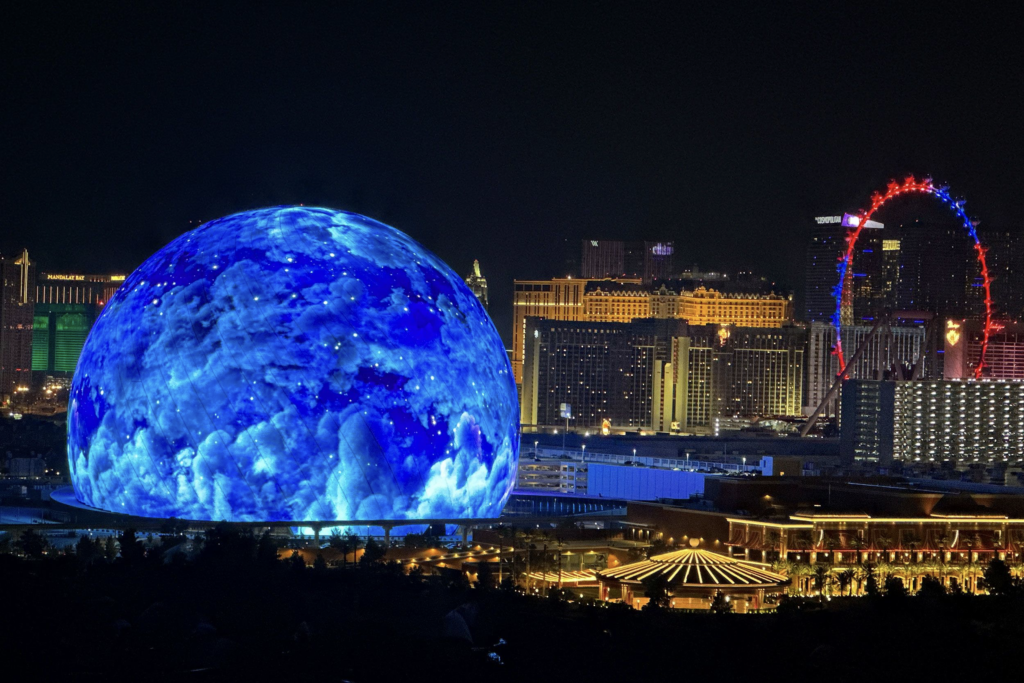
But none of them had ever stepped foot inside the building. Despite being the only degen to have never before been to Vegas, that honor now belongs to me. Last week I saw the third ever show at the sphere, “U2: UV – Achtung Baby Live at the Sphere.” The experience was so overwhelming that I can only report on it by treating it as four entirely different events.
1. The Sphere – Audio
You might think U2 is a bunch of sexagenarians who have no business playing rock ‘n’ roll. You might think Bono is a preachy liberal, or a neoliberal sellout, and you have no interest in having his politics injected into your concert. You might think any U2 album after Joshua Tree – or better, after War – wasn’t worth $15 at the time it was released, so surely isn’t worth $400 to hear played live 30 years later. You might think U2 are the greatest live large-event band of all time, but you refuse to see them without the founder and heart of the group, Mr. Larry Mullen, Jr.
But none of that matters: the audio quality at the Sphere is so mind-blowingly good that you should go see the three Irish old-farts and one younger Dutchmen (Bram van den Berg, standing in for Larry) anyway. The experience bears no resemblance to what you currently think is a stadium concert. The sound is better than anything you’ve ever heard, whether it be at smaller clubs, or in your own audiophile listening room. It’s somehow large and loud yet absolutely intimate at the same time. You hear everything, and you hear it in its own identifiable space. I could have spent the whole concert just listening to Edge’s backup vocals, or van den Berg’s drumming, because I had the ability to listen to those as separate elements.
Even if you only tolerate U2, you would find it worth the price of the ticket (assuming you don’t have to pay scalpers) just to experience the sound in this place. But even if you pass on the U2 residency, promise me this: the very first act that you love that’s scheduled in this building, you must go see them.
2. The Sphere – Visuals
Most reviews of the show spend all their time here, and for good reason: no one has the words to describe the visual experience of the sphere because there are no comparators. You can write the words “16k LED screen, the largest in the world,” but they just don’t mean much, because this is a full body experience. I spent over an hour staring at the initial image on the screen when the doors opened – namely, a series of concrete panels much like the DC metro, though my art historian partner tells me the whole thing was clearly meant to evoke the Roman Pantheon. I knew they weren’t real, but it didn’t matter how many times my seatmates and I said this to one another, they still felt real. The favorite video clip circulating on social media comes from the images displayed during “Even Better than the Real Thing,” and while it’s too tidy to talk about the 30-year old lyrics describing a postmodern future that is now just reality…it still fits.
There are multiple moments in the show where the screen (it’s not even right to call it a screen, because to look at it you have to move your head 45 degrees and look all around you) does something that just melts your mind, and the music becomes background. People continued throughout the show to point at various elements; it was hard to know when to look up, or look left or right. Most significantly, I think the visual technology utterly alters the entire perception of space at the show. The band is just one tiny element of a cinemascape that is absolutely enormous. At various moments it encompasses all of Las Vegas, or the entire Nevada desert, and it just feels real, and so so huge.
Unlike the audio, the visuals cut both ways: if they aren’t done right, they could detract. If they are done well (and they were here), they make for a truly unique experience.
3. U2 – For the General Public
Achtung Baby is a dark album. Really dark. In an effort to “chop down the Joshua Tree,” the sonic landscape explicitly avoids the cinematic quality of that earlier album – the one that lent itself so well to producing anthems that could bring 70,000 people in an ugly football stadium up on their feet. Many U2 fans think it’s their greatest album ever (it is), but not because of the sensation of hearing its “hits” played live. The album doesn’t have those kinds of hits. All of this makes the very idea of this show a real challenge: how do you keep 18,000 spectators engaged while playing all 12 tracks from this album?
The answer is a genius set list (spoilers coming!):
- Start with the most rocking tracks from Achtung Baby
- Break in the middle for a completely unexpected but brilliantly intimate acoustic-set of songs from Rattle and Hum
- Conclude with the darkest and least well-known tracks from Achtung Baby, letting Edge’s genius carry the show (the solos on Acrobat and Love is Blindness are two of his best ever, and here they are both played in a three-song sequence)
- Finish with an encore of hits everyone knows
4. U2 – For Groupies
This was my 25th U2 show, so I obviously fit in this category. It wasn’t my top show on that long list, but it was unique and therefore has a special place. Any fan who has seen them live multiple times absolutely must see this show for a few reasons. First, no matter how many times you’ve seen them, you’ve never heard the band like this. It’s extraordinary. Second, because there are gems in this set list that most fans have been waiting for decades to hear: “So Cruel” had only been played a couple of times, but not in 30 years and never with the full band; Acrobat and Love is Blindness are also very rare (and you know you get to hear them); and I just don’t think any fan was expecting four tracks from Rattle and Hum in one set (though these are not guaranteed – looks like they changed it up the next night).
Finally, I actually thought it was a great experience to hear the band with Bram van den Berg. The dude can play the drums. And while he said exactly the right words for the fans when Bono introduced him – “I know it’s a big deal” – he doesn’t play them just like Larry. There was an added riff in Even Better that was super cool. And during the Rattle and Hum set one could hear quite a bit more funk coming out of his kit than one ever heard in Larry’s. Like everyone else, I want Larry back as soon as he’s healthy, but unlike some famous youtubers who said U2 just shouldn’t ever play again, I thoroughly enjoyed Bram and the boys.
My critique? I didn’t love the encore, and I kind of hated the crowd. Starting with the latter, we were in the 200 level and almost everyone sat for 95% of the concert (and at one point the people behind us asked us to sit down). Aside from one particularly horrible experience at Soldier Field in 1996, it was the worst crowd U2 crowd I’ve ever been in. Surely much of that is just that the fans are super old now – it was basically the first show for me where I intentionally avoided the floor, because I didn’t want to stand for 12 hours – especially for a show to hear this old album at these high ticket prices. But the Sphere also plays into this: it’s more like being at the opera or the theater than at a club or even a stadium concert. The shape of the place, the super steep seating, and the fact that the floor is way below you (it’s all balconies) – all puts you in a position to watch what’s happening on stage (or on screen) rather than being a part of it.
This surely played into my dissatisfaction with the last batch of songs. The encore starts with Elevation and Vertigo, sandwiching their new track, “Atomic City” in between. Those two hits from the 00s were successful because everyone in the arena was literally jumping up and down. Without that, they just didn’t rock as hard. Streets finally got everyone on their feet (way too late), and With or Without You never fails to impress, but they closed with Beautiful Day, literally my least favorite U2 song live. Starting with HTDAAB, U2 has repeatedly tried to manufacture hits (Vertigo, Sexy Boots, American Soul), and it never works; they somehow forget that their hugest hits were songs that should have never been hits according to any algorithm, e.g., With or Without You, Still Haven’t Found.
It didn’t really matter that the closer was not what I wanted. I got so many treats along the way. And if I could afford it, with the sound and comfort and spectacle of the Sphere, I’d literally see them every night. I’m already kicking myself for not buying tickets for the December shows when they first dropped, and now I’m hoping they decide to come back in 2024. See you there, degens.
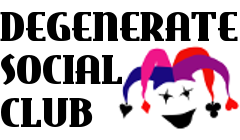
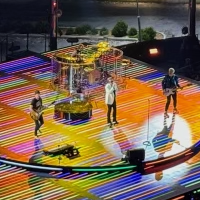
 A look through the blog posts here or a follow of the Degen Social Club Twitter feed makes it clear that on the whole the club enjoys Las Vegas. In particular this reviewer keeps up on the city from afar, and reads up on the subject often. So there is a certain affinity already for the subject matter of Carolyn V. Hamilton’s memoir,
A look through the blog posts here or a follow of the Degen Social Club Twitter feed makes it clear that on the whole the club enjoys Las Vegas. In particular this reviewer keeps up on the city from afar, and reads up on the subject often. So there is a certain affinity already for the subject matter of Carolyn V. Hamilton’s memoir, 


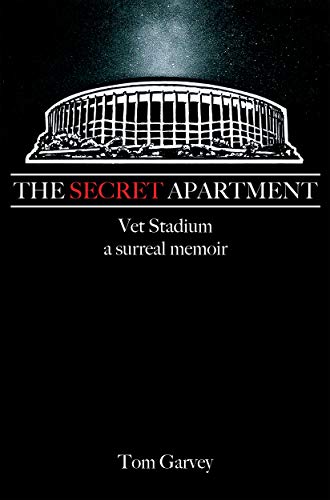 I’m going to let you in on a secret about
I’m going to let you in on a secret about


